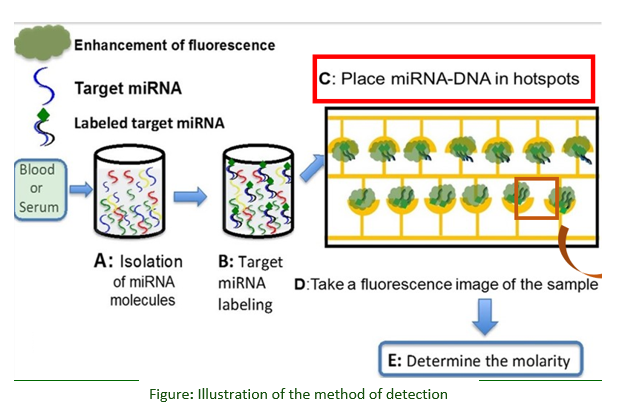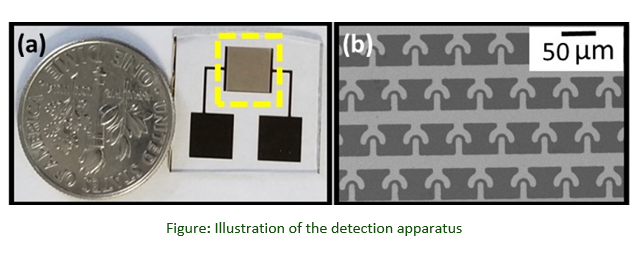Novel Technique And Apparatus For Detection And Quantification Of Biomolecules In Body Fluids (RFT-553)
Invention Summary:
Clinicians have long struggled with detection of low-abundance biomarkers in body fluids. Additionally, there is an ever-growing demand for increased sensitivity and high throughput in detection and quantification techniques. To overcome these issues, researchers at NDSU have developed a novel apparatus to quantify low-levels of biomarkers in biological samples, using integrated dielectrophoretic and plasmonic based fluorescence enhancement. The combination of the two technologies can be used to target the highly specific miRNA/biomarkers secreted by the cancer cells during early stages. Currently, ELISA and RT-PCR methods are considered a gold standard for miRNA detection. This novel, high throughput biosensing system provides a detection range of 1fM - 1pM with an estimated 20 min completion time, which is more sensitive and faster than the current standards.


Benefits:
- Ideal for early detection of several cancers such as pancreatic, colorectal and brain cancer
- Fast and accurate results, ideal for point-of-care setting
- Better sensitivity as compared to current clinical standards
- Easy to operate and inexpensive to manufacture
- Compatible with widely used fluorescence imaging devices
- Beneficial in identification of different biomolecules such as DNA, mRNA, miRNA, antigens and other proteins
- Compatible with different body fluid samples such as serum, plasma, sputum, urine, etc.
Phase of Development:
This technology has successfully completed laboratory testing with reproducible results.
Patents:
This technology is the subject of Issued US Patent No 10794894 and is available for licensing/partnering opportunities.
Contact
NDSU Research Foundation
info(at)ndsurf(dot)org
(701)231-8173
NDSURF Tech Key
RFT, 553, RFT553
Inquire about this technology >